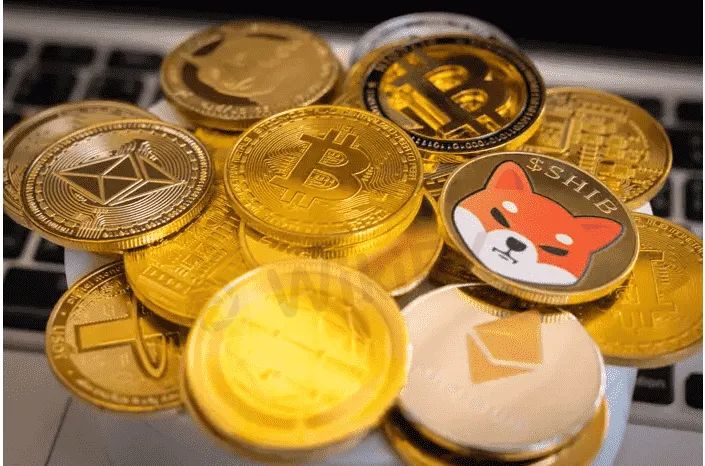简体中文
繁體中文
English
Pусский
日本語
ภาษาไทย
Tiếng Việt
Bahasa Indonesia
Español
हिन्दी
Filippiiniläinen
Français
Deutsch
Português
Türkçe
한국어
العربية
Crypto Market Daily Highlights – BNB Bucked the Top Ten Bearish Trend
Abstract:It was a bearish end toa bearish week for the crypto market, with Fed fear and sentiment towards the economic outlook weighing.

Key Insights:
It was a mixed Sunday for the crypto top ten, with binance coin (BNB) bucking the trend.
The NASDAQ 100 Mini delivered a final hour (UTC) pullback to leave the crypto market in the red for the session and the week.
The mixed session left the crypto market cap down $13.9 billion to $884.6 billion.
It was a mixed Sunday session for the crypto top ten. BNB bucked the broader market trend, while XRP led the way down, with a return to sub-$0.45. BTC revisited sub-$19,000 for the fifth day in the week.
Market angst over the Fed and the global economic outlook delivered a bearish weekend, with the broader crypto market seeing red for the third consecutive session.
Following the NASDAQ 100s third quarterly loss and worst losing streak since 2008, the NASDAQ Mini 100 weighed on the broader crypto market in the final hour (UTC).
This morning, the NASDAQ 100 Mini was down 30.25 points.

Crypto Market Sees Red for a Third Consecutive Session
On Sunday, the crypto market rose to an early high of $904.3 billion before sliding to a final hour low of $878.7 billion. While recovering from the session low, the crypto market cap fell by $13.9 billion to end the day at $884.6 billion.
Three consecutive days in the red reversed gains from earlier in the week to leave the market cap down $1.19 billion for the week.

The Crypto Market Movers and Shakers from the Top Ten and Beyond
It is a mixed Sunday session for the crypto top ten.
XRP led the way down, sliding by 5.64%, with ADA (-2.56%), DOGE (-2.16%), and ETH (-2.65%), struggling.
BTC (-1.29%) and SOL (-1.18%) also saw red, while BNB (+0.64%) bucked the top ten trend.
From the CoinMarketCap top 100, it was a bearish session.
Maker (MKR), Reserve Rights (RSR), and Pancake Swap (CAKE) led a bearish session. MKR rose by 3.32%, with RSR and CAKE seeing gains of 1.20% and 1.17%, respectively.
However, Chiliz (CHZ) led the broader market into the red, sliding by 9.59%. Huobi Token (HT) and IOTA (MIOTA) also struggled, with losses of 5.64% and 6.24%, respectively.
24-Hour Crypto Liquidations Spike in a Final Hour Sell-Off
Over 24 hours, total liquidations rose on Sunday, with the NASDAQ 100 Mini leading to a spike in liquidations in the final hour (UTC). However, 24-hour liquidations remained below normal levels, with the crypto market moving within a tight range through most of the session.
At the time of writing, 24-hour liquidations stood at $76.05 million, up from $29.26 million on Sunday morning. Liquidated traders over the last 24 hours also increased. At the time of writing, liquidated traders stood at 31,321 versus 14,570 on Sunday morning. Liquidations were up over one hour, four, and twelve hours.

According to Coinglass, 12-hour liquidations stood at $43.47 million, up from $23.11 million on Sunday morning, with four-hour liquidations up from $4.25 million to $32,47 million. One-hour liquidations were up from $1.83 million to $28.73 million.
The chart below shows market conditions throughout the session.


Disclaimer:
The views in this article only represent the author's personal views, and do not constitute investment advice on this platform. This platform does not guarantee the accuracy, completeness and timeliness of the information in the article, and will not be liable for any loss caused by the use of or reliance on the information in the article.
Read more

What Euro Investors Can't Afford to Miss
For euro investors, geopolitical factors, inflation data, and the European Central Bank's policy direction will determine the market trends over the next few months.

How Big is the Impact of the USD-JPY Rate Gap on the Yen?
The U.S. Federal Reserve's repeated rate cuts and the narrowing of the U.S.-Japan interest rate differential are now in sight. So, why is the U.S.-Japan interest rate differential so important for the yen’s safe-haven appeal, especially when global economic uncertainty rises?

Malaysian Man Killed in Alleged Forex Dispute-Related Attack
A 44-year-old Malaysian businessman, Wong Kai Lai, died after being attacked by about 20 men in Jenjarom, Kuala Langat, on 19 December. Police believe the attack may have been linked to a foreign currency exchange dispute.

Turkey Resumes Rate Cuts Amid Easing Inflation
Turkey’s inflation has eased, prompting the central bank to resume interest rate cuts. Striking a balance between economic recovery and inflation control has become a critical focus. However, significant challenges lie ahead, as Turkey continues to navigate complex economic conditions.
WikiFX Broker
Latest News
Will Gold Break $2,625 Amid Fed Caution and Geopolitical Risks?
ECB Targets 2% Inflation as Medium-Term Goal
New Year, New Surge: Will Oil Prices Keep Rising?
PH SEC Issues Crypto Guidelines for Crypto-Asset Service Providers
FTX Chapter 11 Restructuring Plan Activated: $16 Billion to Be Distributed
Bithumb CEO Jailed and Fined Over Bribery Scheme in Token Listing Process
WikiFX Review: Something You Need to Know About Saxo
Is PGM Broker Reliable? Full Review
Terraform Labs Co-founder Do Kwon Extradited to the U.S. to Face Fraud Charges
Has the Yen Lost Its Safe-Haven Status?
Currency Calculator






